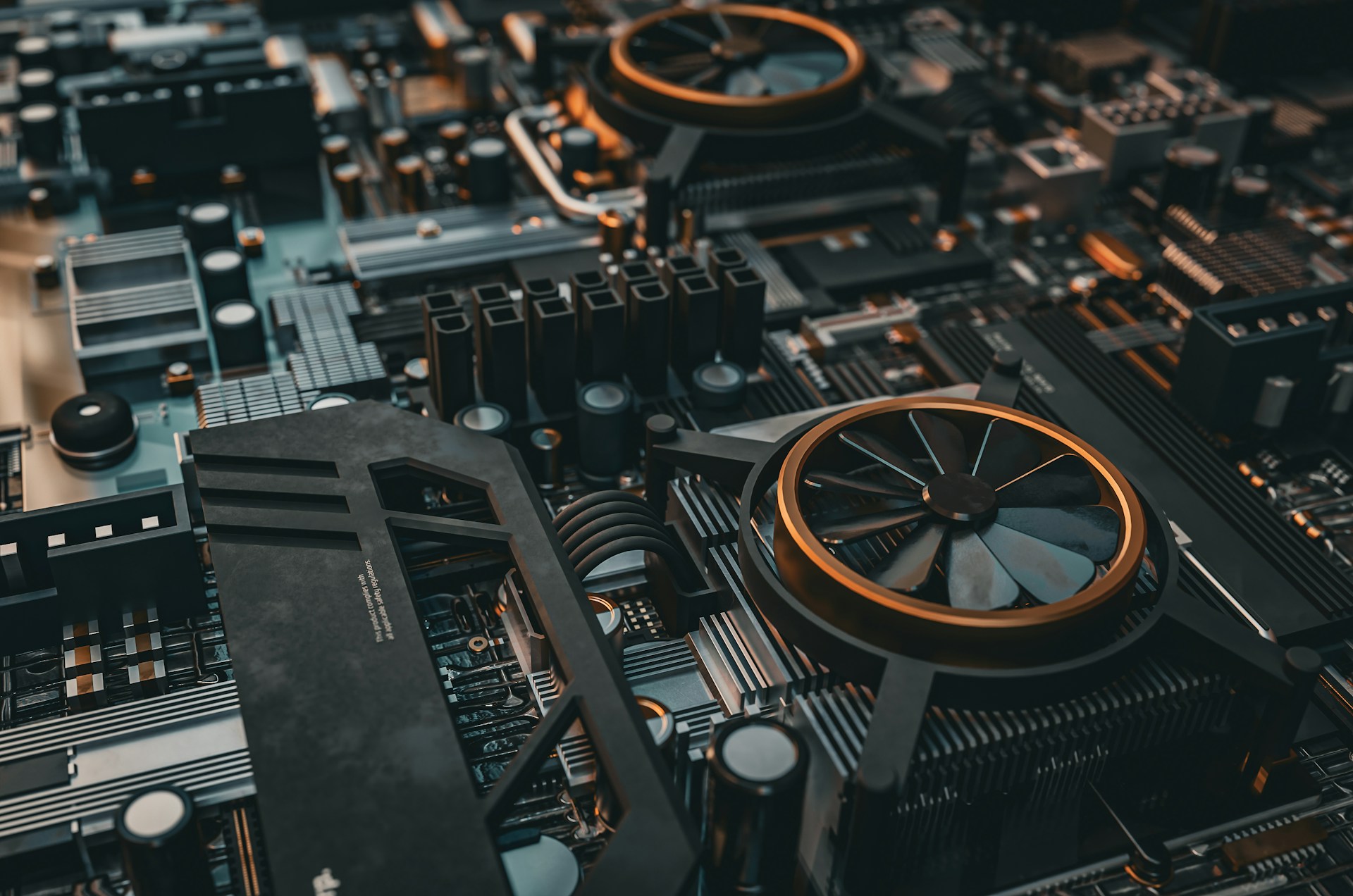Integrated Circuits (ICs) are tiny marvels that have transformed electronics by combining multiple components into a single chip. These compact packages contain circuits with numerous transistors, resistors, and capacitors that work together to perform specific tasks. Found in almost every modern electronic device, ICs come in different types, each tailored for particular functions. This guide explores the main types of ICs and how they play crucial roles in our everyday devices, from smartphones to home appliances.
1. Analog Integrated Circuits
Analog ICs process continuous signals and are essential for handling real-world inputs, such as sound, light, and temperature. Unlike digital ICs that process binary data, analog ICs work with a range of values, making them ideal for amplification, filtering, and signal modulation.
- Applications:
- Audio Equipment: Analog ICs are used in amplifiers, helping to boost sound signals for clearer and louder audio output.
- Sensors: Analog ICs process sensor data in devices like thermometers, where they convert varying temperature readings into usable information.
- Radios and Communication Devices: Analog ICs modulate signals, enabling smooth transmission and reception in radios, TVs, and other communication devices.
2. Digital Integrated Circuits
Digital ICs operate with binary data, using logic gates to process 0s and 1s. They are integral to computing and digital electronics, performing functions like arithmetic, data storage, and data processing.
- Applications:
- Computers and Smartphones: Digital ICs serve as processors and memory, enabling complex calculations and data storage. The central processing unit (CPU) in your computer is a digital IC.
- Gaming Consoles: Digital ICs handle the processing of graphics, sound, and controls, allowing seamless and responsive gameplay.
- Appliances: Many household devices, like microwaves and washing machines, use digital ICs to run control systems and automate functions.
3. Microprocessors
Microprocessors are specialized digital ICs that act as the brains of computers and other devices. They process information, execute instructions, and control various functions within a device.
- Applications:
- Computers: The CPU, the core processing unit in computers, is a microprocessor that handles all major computations.
- Smartphones: Microprocessors manage everything from the touchscreen interface to running apps, making them essential in mobile devices.
- Smart Home Devices: Many home automation devices, like smart thermostats and security cameras, contain microprocessors that enable intelligent decision-making.
4. Microcontrollers
Microcontrollers are compact ICs that integrate a processor, memory, and input/output ports, designed for embedded applications. They control specific tasks within devices, often in real time.
- Applications:
- Appliances: Microcontrollers are widely used in washing machines, coffee makers, and refrigerators, where they control timing, temperature, and user interface functions.
- Automotive Systems: They play a role in modern cars by managing engine control units (ECUs), anti-lock braking systems (ABS), and airbag deployment.
- Wearable Devices: Microcontrollers enable low-power, efficient operation in devices like fitness trackers and smartwatches.
5. Power Management ICs (PMICs)
Power Management ICs regulate voltage and power levels, ensuring consistent energy distribution to different parts of an electronic device. PMICs are especially important for battery-operated devices, where efficient power usage is essential.
- Applications:
- Mobile Devices: In smartphones and tablets, PMICs control battery charging, manage power distribution, and prolong battery life.
- Electric Vehicles (EVs): PMICs play a crucial role in monitoring and managing battery levels and energy consumption in electric vehicles.
- Laptops: PMICs enable efficient power management, helping laptops switch between power-saving and performance modes depending on usage.
6. Radio Frequency ICs (RFICs)
RFICs are designed to operate at high frequencies, managing wireless communication across various devices. They are essential for any technology that transmits data wirelessly.
- Applications:
- Wi-Fi and Bluetooth Devices: RFICs enable wireless data transfer in devices like smartphones, laptops, and tablets.
- Telecommunication: Cell towers and mobile phones use RFICs to manage the transmission and reception of voice and data signals.
- IoT Devices: In the Internet of Things, RFICs allow devices to communicate wirelessly, making smart homes, wearables, and industrial sensors possible.
7. Application-Specific Integrated Circuits (ASICs)
ASICs are custom-designed for specific applications, making them highly efficient at performing specialized tasks. They are commonly used when high performance and low power consumption are necessary.
- Applications:
- Graphics Cards: In gaming and professional design, ASICs are used to handle the intense processing required for rendering graphics.
- Cryptocurrency Mining: ASICs are optimized for the repetitive calculations needed in cryptocurrency mining, making them faster and more efficient than general-purpose processors.
- Smart Appliances: ASICs control functions in smart home appliances, such as smart thermostats and voice-activated assistants, by performing specific, dedicated functions.
8. Field-Programmable Gate Arrays (FPGAs)
FPGAs are versatile ICs that can be reprogrammed to perform different functions after manufacturing. Unlike ASICs, which are fixed, FPGAs can be adapted for various applications, making them useful in industries where flexibility is essential.
- Applications:
- Aerospace and Defense: FPGAs allow for real-time adaptation in radar systems, communication devices, and other mission-critical applications.
- Prototyping: Engineers use FPGAs to test designs before creating custom ASICs, allowing for iterative development.
- Automotive ADAS Systems: Advanced Driver Assistance Systems (ADAS) in vehicles use FPGAs for processing sensor data and enabling autonomous driving features.
9. Memory ICs
Memory ICs store data temporarily or permanently and are a vital component in all electronic devices that process or store information.
- Applications:
- Computers: RAM (Random Access Memory) ICs provide temporary data storage for quick access, while hard drives and SSDs offer permanent storage.
- Smartphones: Memory ICs store operating systems, apps, photos, and other data, enabling fast data retrieval and storage.
- Embedded Systems: In devices like printers, memory ICs store firmware, enabling devices to retain functionality without continuous input.
10. Voltage Regulators
Voltage regulator ICs maintain a stable voltage level for sensitive electronic components, ensuring consistent performance despite fluctuations in power supply.
- Applications:
- Power Supplies: Voltage regulators stabilize output in AC adapters and DC power supplies, protecting connected devices.
- Embedded Electronics: Many low-power circuits in sensors, LEDs, and processors use voltage regulators for safe operation.
- Automotive Electronics: Voltage regulators help maintain the stable operation of car electronics, like dashboard displays and infotainment systems.
11. Operational Amplifiers (Op-Amps)
Operational Amplifiers, or Op-Amps, are versatile ICs used to amplify voltage signals. They are found in a wide variety of applications due to their ability to handle analog signal processing.
- Applications:
- Audio Equipment: Op-Amps amplify audio signals, making them essential in headphones, speakers, and sound systems.
- Medical Devices: In devices like ECGs and blood pressure monitors, Op-Amps amplify biological signals for accurate measurement.
- Control Systems: Op-Amps are used in industrial and automation systems to stabilize signals, improve accuracy, and filter noise.
Conclusion
Integrated Circuits have revolutionized technology by miniaturizing complex circuitry and enabling more powerful, efficient, and affordable devices. From microprocessors that run your smartphone to voltage regulators that protect sensitive electronics, ICs are essential to every aspect of modern technology. Understanding the different types of ICs and their applications provides insight into how they power and enhance the devices we rely on daily. Whether you’re an electronics hobbyist, engineer, or curious consumer, knowing these IC types helps in appreciating the technological advances that make our lives more connected and convenient.











